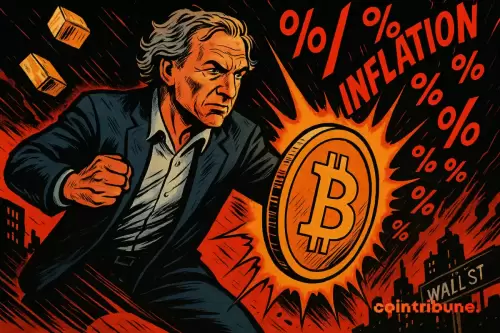Examining XRP's origins as a solution to Bitcoin's limitations and its evolution as a complementary force in the blockchain ecosystem.

In the ever-evolving world of cryptocurrency, the dynamics between different digital assets are constantly shifting. Let's dive into the debate around XRP, Bitcoin, and their perceived flaws. It's not about rivalry; it's about evolution.
XRP: A Response to Bitcoin's Challenges
Back in 2009, Bitcoin emerged, introducing the concept of decentralized money. However, by 2011, blockchain developers were already pinpointing its limitations: slow transactions, high energy consumption, and scalability issues. This is where XRP enters the scene. According to Ripple co-founder Chris Larsen, the initial idea was to “build a better Bitcoin.”
Technical Advantages of XRP
The XRP Ledger (XRPL), developed by David Schwartz, Jed McCaleb, and Arthur Britto, aimed to create a faster, more scalable, and sustainable digital asset for payments. Bitcoin handles around seven transactions per second, while XRP can process 1,500 transactions per second. Launched in June 2012, XRP quickly gained traction as a solution for real-time gross settlement and foreign exchange, integrating with the existing financial system rather than trying to replace it.
XRP's Current Position and Future Prospects
Today, XRP's use extends beyond just remittances. The XRP Ledger supports Ethereum-compatible smart contracts and pilot programs for tokenized assets, stablecoins, and even central bank digital currencies (CBDC). Investor confidence is also growing, as evidenced by the surge in XRP whale wallets holding over 1 million XRP. As of late June 2025, the number reached a 12-year high of 2,708.
Market Dynamics and Investor Sentiment
Recent market activity shows XRP outperforming the broader market, with its price seeing gains. Meanwhile, ETH is also experiencing positive momentum, driven by validator network upgrades and ETF inflows. This favorable environment has led many investors to explore stable income channels, such as cloud mining platforms like APT Miner, where they can earn passive income on their crypto holdings.
A Complementary Ecosystem
The philosophical differences between Bitcoin and XRP continue to shape their roles in the crypto world. Bitcoin remains a decentralized store of value and inflation hedge, while XRP is positioned as a utility asset for institutional finance. Thirteen years after the XRP Ledger’s launch, it’s clear that XRP is not a Bitcoin competitor but a complementary part of the blockchain ecosystem.
Final Thoughts
So, while Bitcoin laid the foundation, XRP is stepping up to address some of the initial architectural challenges. It's less about flaws and more about growth, adaptation, and carving out unique niches in the crypto landscape. Who knows what the future holds? One thing's for sure: it's going to be an exciting ride!





















































































